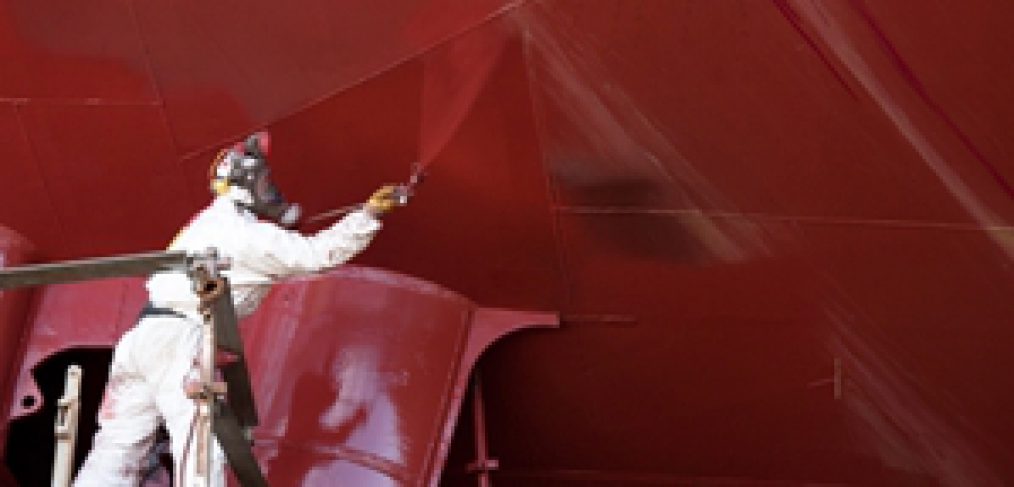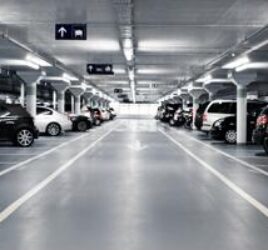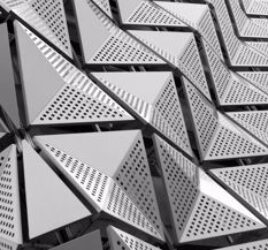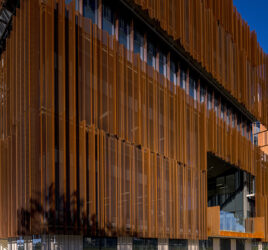
The benefits of powder coating in architectural projects
With so many ways to treat and finish metal products, it can be hard to choose which method is best for your project. Since the 1970s, powder coating has been a favourite option among architects due to its versatility and durability, as well as its eco-friendly credentials. But how does this technique work, and what makes it so popular?
Here's the Locker Group guide to powder coating in architecture.

The process of powder coating
Powder coating is the addition of a protective plastic layer to a metal substrate using a spray gun. It may sound like child's play, however there's a little more to the process than meets the eye:
- Do I need to prepare the metal? Before any spraying takes place it's crucial that the metal is decontaminated and cleaned. The presence of unwanted substances on the base product may mean the powder doesn't stick well, causing bumps and other unwanted features. Common contaminants include grease, corrosion patches, oil and mill scale. Later on we'll discuss which pre-treatments best suit different metal types.
- What's in the coating? The spray emitted from the gun comprises ingredients including polymer resins, levelling agents and pigments, which have been melt mixed and ground into a powder. By changing the colour of the polymer, you are able to get a wide variety of different colour coats.
- How does it stick to the substrate? The spray gun itself supplies an electrostatic charge to the powder particles (a process called electrostatic spray deposition), meaning they're attracted to the earthed metal.
- Why is this process so effective? The adhesive properties of the coating are increased further when the parts go through a curing oven. The heat reacts with the chemicals in the coat to create dense cross-links between the molecules that are very difficult to breakdown.
Powder coating is the addition of a protective layer of plastic to a metal substrate using a spray gun.
The benefits of powder coating for architects
The process described above gives powder coats some unique characteristics that make it ideal for use in architectural projects. Here are some of the most important:
Choice – You can powder coat your chosen features in just about any colour, meaning powder coating provides aesthetic function in addition to the practical benefits we will mention shortly. However, don't stop at colour – from matte to ultra glossy you have an almost limitless selection of textures too.
Durability – Powder coats are long lasting. Unlike many of the paint based finishing techniques with which it's often associated, powder coating has a high tolerance for a variety of environmental conditions, as well chemicals and abrasion.
Environmental compliance – 2018 has seen awareness of human impact on the environment reach new levels, and it's important that architects and industrial practitioners minimise their negative effect on the planet. There are a number of features of the powder coating process that make it more ecologically sound than many alternative techniques:
- It eliminates, or greatly reduces, the emissions of volatile organic compounds (VOCs), which are traditionally found in paints.
- Powder coating also minimises or removes the release of hazardous air pollutants (HAPs) associated with conventional liquid coatings.
- If more powder is sprayed than necessary, the excess can be retrieved for future use.
- Powder coats usually don't contain heavy metals that can be dangerous for people as well as the environment.

As well as offering choice and durability to architects, powder coatings are environmentally friendly.
Which metals suit powder coating?
The good news if you like what you're hearing about powder coating so far, is that it's a technique applicable to a wide range of products. For architects this means that it can be used extensively on both the inside and outside of builds.
Here we'll have a look at three specific metals which are the primary materials for many of our favourite products. They all make excellent candidates for powder coating, but require unique treatment prior to spraying.
- Aluminium – The lightweight yet strong nature of aluminium means that it's a firm favourite in building design. However, the oxide coating that gives aluminium its rust resistant reputation must be removed prior to powder coating to allow the polymer to bond with the metal itself, rather than this protective outer layer. This can be achieved through surface blasting or submerging the metal in a phosphate solution.
- Galvanised steel – As galvanised steel has already been finished (through the process of galvanisation), it may seem like an odd choice to include here. However, as powder coating adds another layer of protection, this substrate is actually one of the most common to undergo the process. In addition, the fact that galvanised steel has the capacity to form a layer of zinc oxide or zinc carbonate, similar to the oxide layer on aluminium, means that similar techniques must be employed to remove this before spraying can commence.
- Stainless steel – For stainless steel the focus is on profiling the surface of the metal to make it easier for the powder to stick. This could involve blasting with a sharp substance such as aluminium oxide or, at a more advanced level, an acid etch.
A few drawbacks
While powder coating has a lot going for it, it wouldn't be fair to paint it in a perfect light, if you'll excuse the pun. Here are two drawbacks you should consider:
- Achieving a thin layer is difficult – This is due to a relative lack of control over the rate and amount of powder applied to the target. If you're looking to apply 6 millimetres or less, this isn't the technique for you.
- It's hard to remove – We told you it's durable. However, the flip side of this advantage is that removing powder coats will take some time if mistakes are made.
Powder coating is a useful tool in an architect's arsenal, but only when implemented correctly for your unique project. At Locker Group we work directly with our architectural clients to deliver products tailored to your requirements, engaging with you every step of the way.




